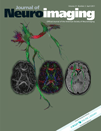Kinky Hair, Kinky Vessels, and Bladder Diverticula in Menkes Disease
J Neuroimaging 2011;21:e114-e116.
ABSTRACT
Menkes disease (MD) is an infantile—onset X-linked recessive neurodegenerative disorder caused by deficiency or dysfunction of a copper-transporting ATPase, ATP7A. The effect of altered transportation of copper may affect various enzymatic functions differently. Among all enzymatic functions, lysyl-oxidase enzymatic activity, which is crucial in the formation of the lysine-derived cross-links in collagen and elastin, is the most sensitive to the copper transport alterations. Pili torti, tortuous intracranial vessels and bladder diverticula are clinical aspects strictly related to the connective tissue alterations dependent on the lysyl-oxidase deficiency. Despite a pleiotropic clinical appearance of MD patients, we observed tortuous intracranial vessels and bladder diverticula in 4 consecutive Menkes patients at different stages of the disease. We speculate that these findings are present at early stages and could be considered suggestive findings in MD.




